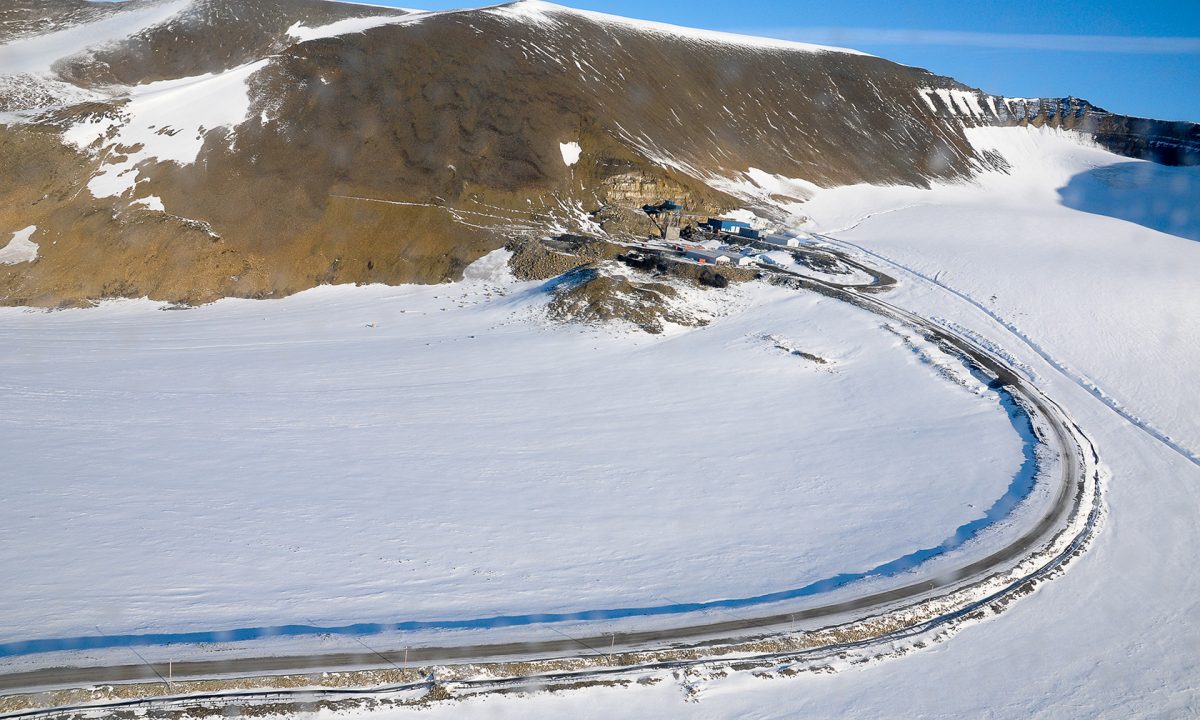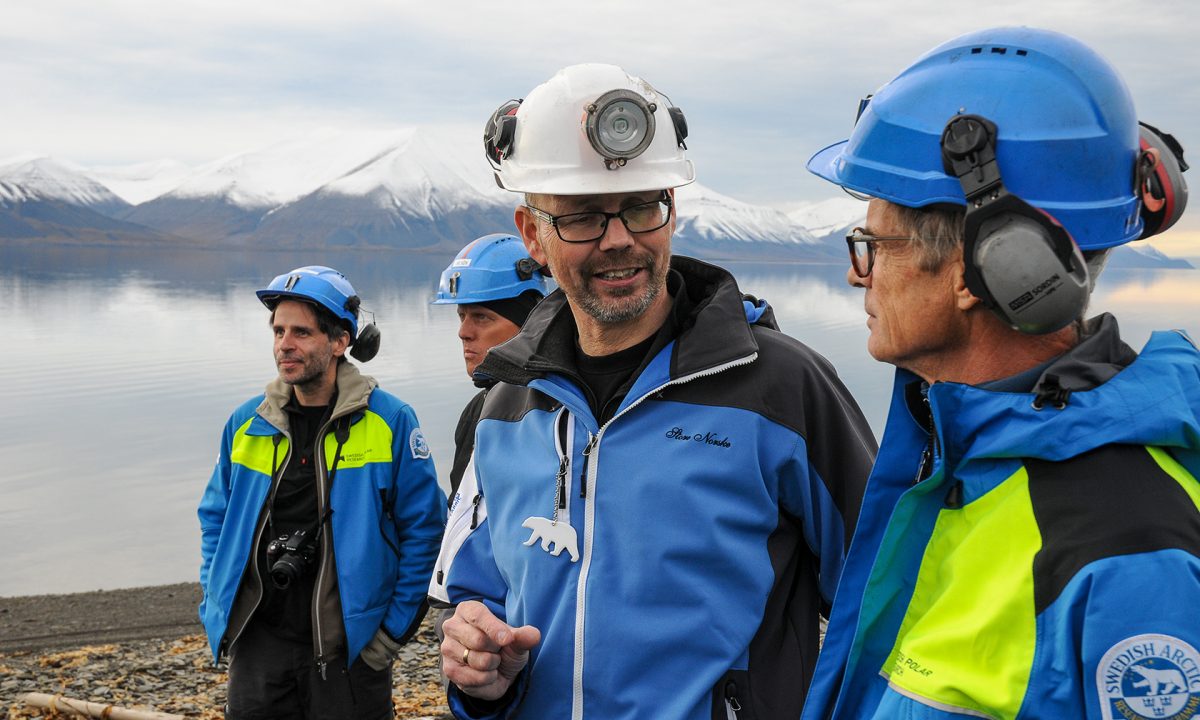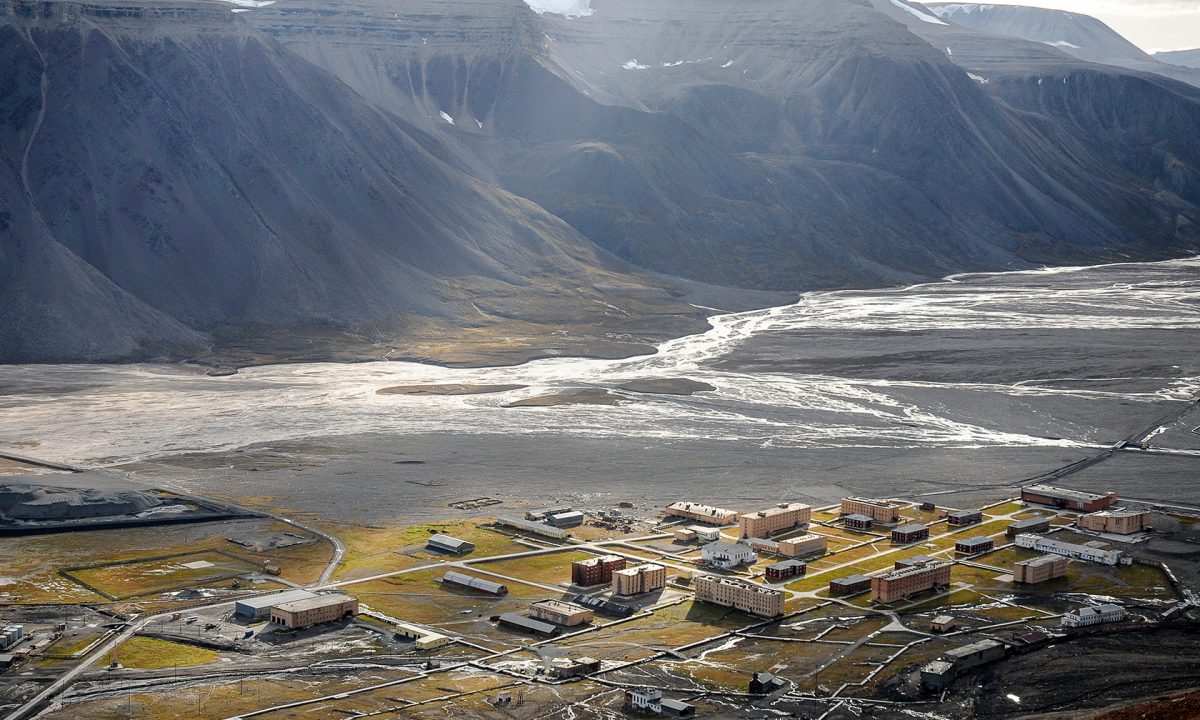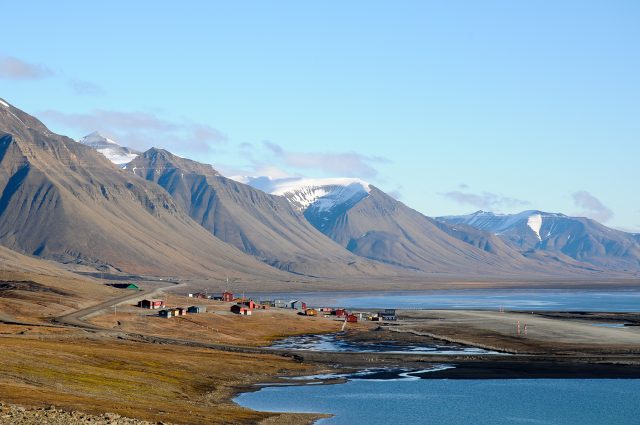Mining settlements in transition – Reflections from Svalbard
“The road you see down there, that’s the most expensive road in Norway,” says one of the helicopter pilots as he takes us for a low altitude turn over the entrance to the closed Lunckefjell coal mine and the abandoned road leading to it across a glacier. The Lunckefjell mine, part of the Sveagruvan mining system at Svalbard, was opened in 2015 by the Norwegian state company Store Norske at a cost of more than 1 billion NOK. It has now become the most emblematic example of the transformation that Svalbard is currently undergoing – from an archipelago with an economy based on extractive industries (coal mining) into a post-extraction future that has yet to be formed.
Mining at Svalbard started in the 1870s, boomed in the opening decades of the 20th century and eventually became the foundation of a handful of Norwegian and Soviet/Russian coal mining settlements that remain to this day. Rising prices for minerals and fossil fuels in the mid-2000s worked in the industry’s favor and influenced Store Norske’s decision to invest in Lunckefjell. The high prices didn’t persist, however, and the company’s owner (the Norwegian state) responded by putting production at Lunckefjell on hold before it had even begun.
The fate of the Lunckefjell mine is not unique in the history of mining. The industry is dependent on world market prices and mines with high production costs are always vulnerable when prices fall. Neither is it unique to Svalbard, where the coast lines are dotted with the remains of abandoned mining settlements and prospecting camps. De-industrialization, including environments full of material remains from more than a hundred years of mining, poses great challenges for communities on Svalbard (as elsewhere in the Arctic). With the objective to study how actors at Svalbard deal with those challenges, a team of 10 researchers from REXSAC conducted field research between 30 August and 11 September 2016. Ultimately we want to find out under what circumstances the remains of past mining activities can become a resource for sustainable post-industrial futures in the Arctic.

During two weeks we conducted interviews and documented built environments in four different mining settlements at Svalbard – Longyearbyen, Sveagruvan (Norwegian), Barentsburg and Pyramiden (Russian). We talked to representatives of mining and logistics companies, engineering consultancies, workers organizations, tourism firms, state and municipal authorities, museums and representatives of scientific communities. Naturally different actors had different visions and ambitions for the future of Svalbard, but on an overarching level few believe in a revival of the coal mining industry. The future is post-extraction, and the future visions gravitate around two main activities – tourism and scientific research.

Most actors argued that the built environment that the mining industry has left behind will be a resource when building a new future for the settlements at Svalbard. Housing and service buildings that were built for mining can for example house tour guides, hostels, scientists and laboratories. Opinions diverge, however, on whether research will be enough to sustain permanent settlements with costly infrastructures for energy production, heating, water management and transport. The former mining community of Ny Ålesund, today a platform for research in the natural sciences, is often mentioned as a successful example. But how many Ny Ålesunds can there be on Svalbard? Two? Three?
Tourism has grown into a substantial business in Longyearbyen, profiting from the proximity of an airport with multiple daily connections to Norway, but can tourism sustain settlements elsewhere at Svalbard? Some actors believe this is possible. Framed as industrial heritage in remote locations with more direct access to the Arctic wilderness, settlements like Barentsburg and Pyramiden are already attracting a growing number of tourists – the latter as a frozen moment from the Soviet Union. This narrative seems to work. The owner, Trust Arktikugol, recently claimed that they are making almost as much money from tourists as they do from coal.

Not all material legacies of mining at Svalbard are as easy to reuse. The landscapes are dotted with remains of transport infrastructures, waste rock piles, and industrial buildings, which few would dream of re-making into a guest houses. It could seem awkward to ascribe values to such remains in an archipelago that the Norwegian government describes as a well preserved wilderness. Nevertheless, many of these remains are protected by Norwegian heritage laws and most actors we talked to hope that they will be preserved because they value them as representations of what they believe makes Svalbard unique, as an industrial outpost in the high Arctic. A common argument was that Longyearbyen and Svalbard should not become just like any other place in Norway. Svalbard should be a different place, because that’s why we like to live and work here and that’s why tourists come here, people told us.
Store Norske’s concession for Lunckefjell compels the company to remove all remains of the mine if the company decides to shut it down for good. For a remote location like Lunckefjell, this policy made sense to the actors we spoke with. But in other parts of Svalbard it is clear that the historical remains of mining are regarded as a tool for maintaining a unique quality of life and for building a post-industrial future in which the abandoned mines – not the coal – are the resource.





